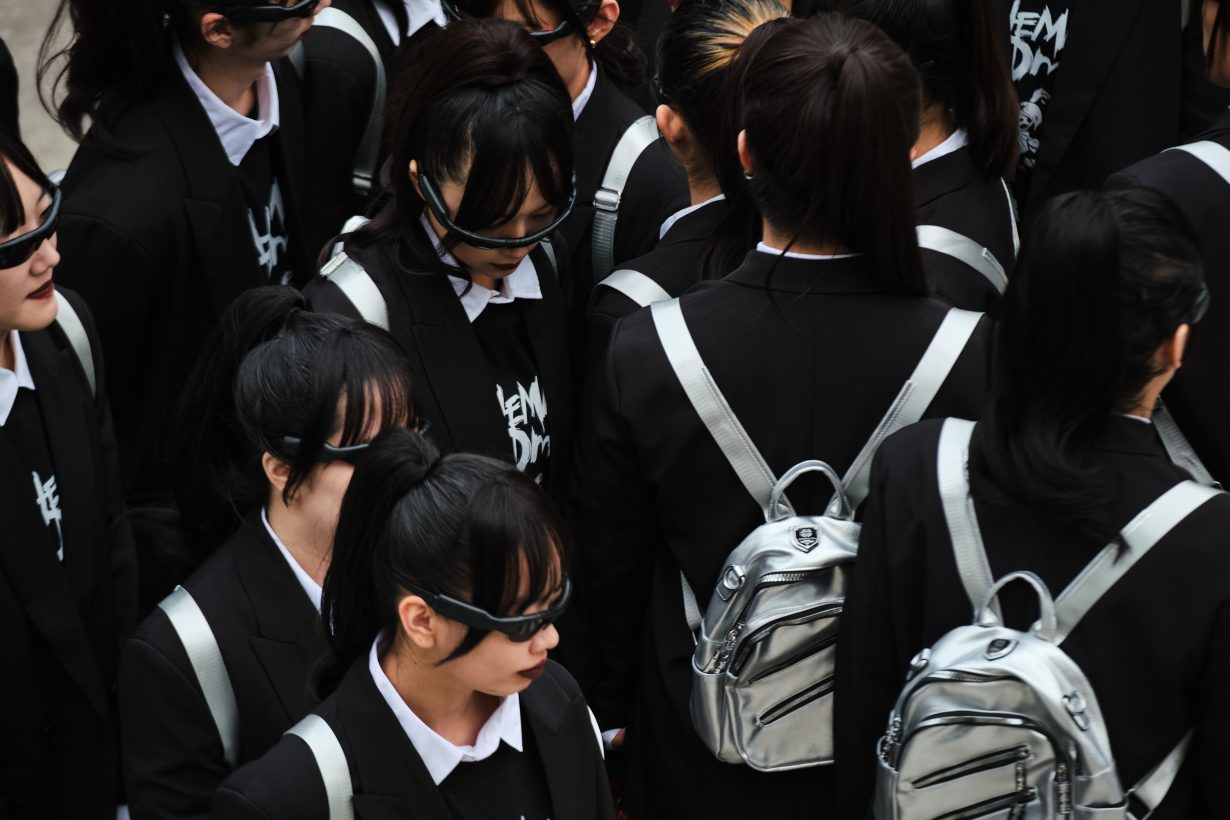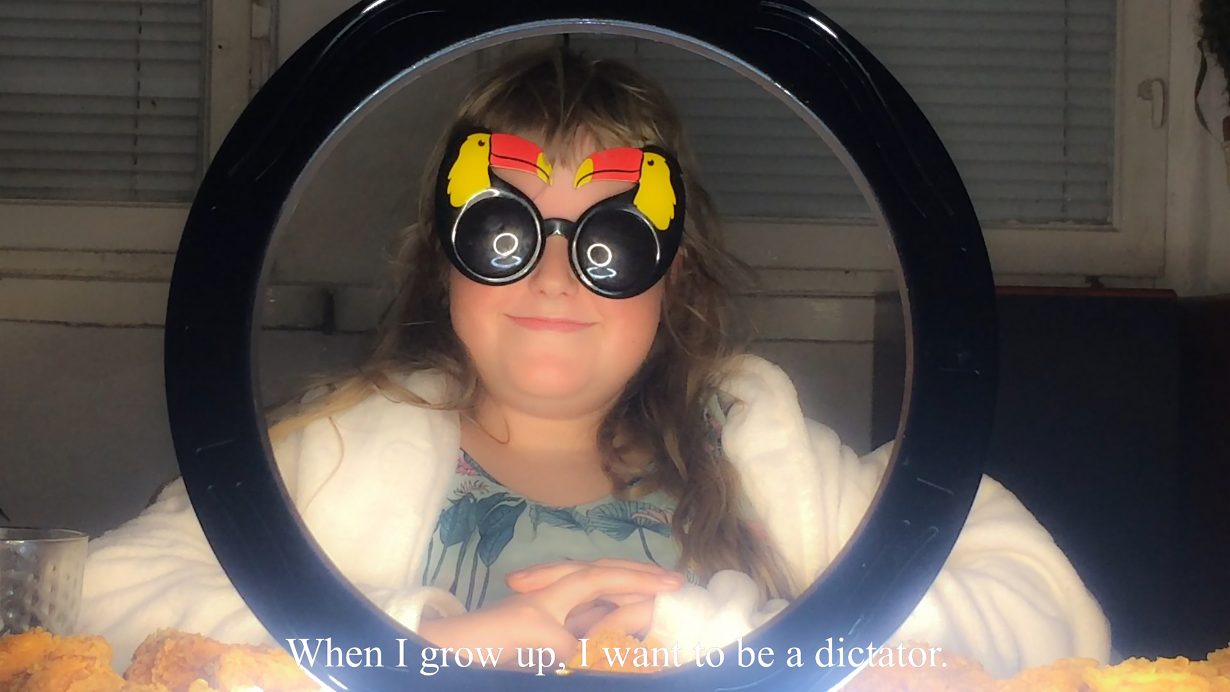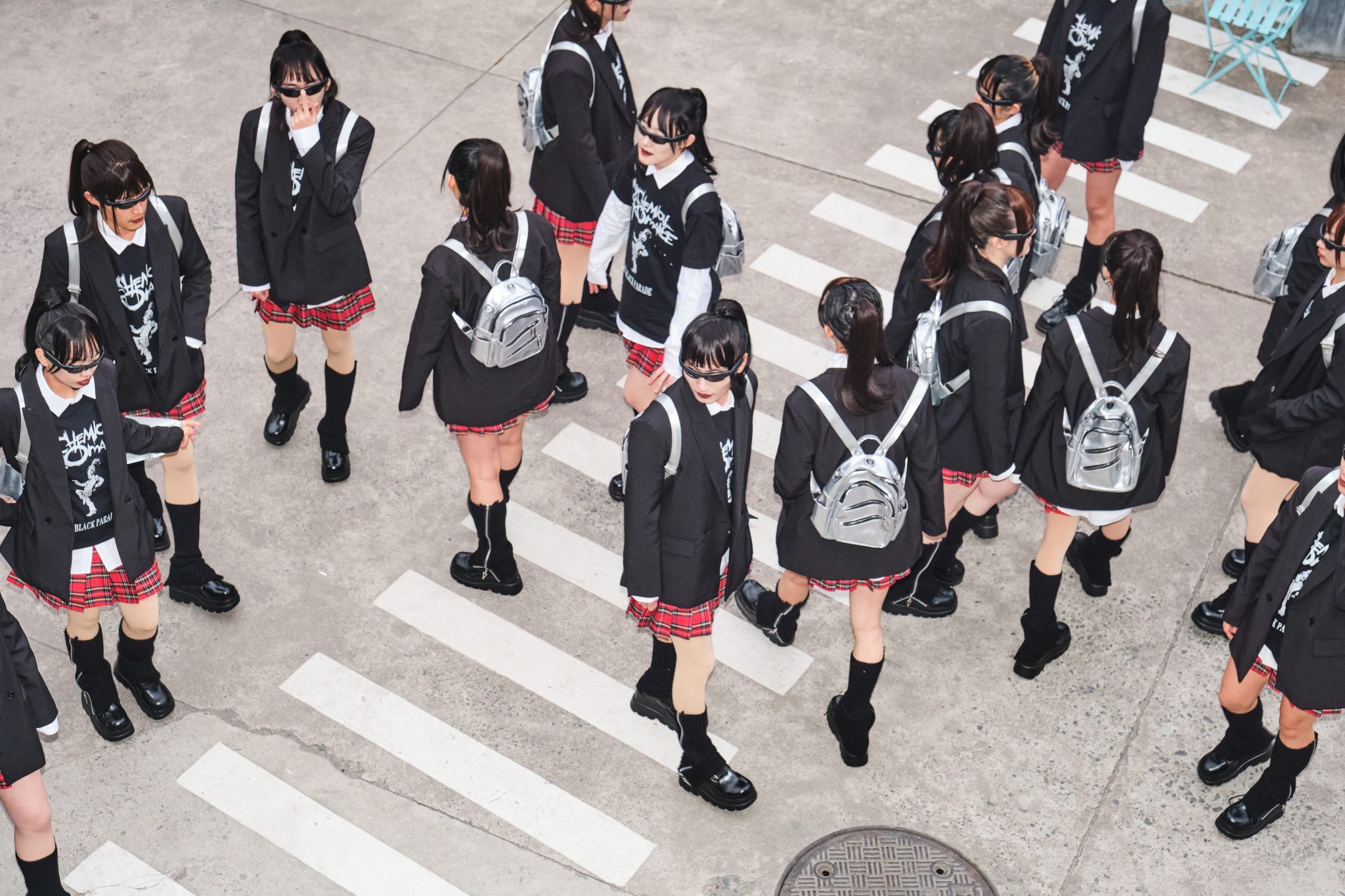The chinese artist’s circular tracks – from My Chemical Romance to Georges Perec – are charting new directions
Born in 1990 and raised in Wuyishan City in southeastern China, Shuang Li remembers feeling like she’d never related to anything more in her life than when she discovered American punk and emo bands as a teen. Thinking about it in 2023, she understands why: “All these bands were kids from suburbia in America and their songs were all about getting out of there”. Indeed, according to the artist, the only lyrics she could understand back then were those along the lines of “I wanna get out of here”. It resonated with a desire to escape both her surroundings and her body, which she channelled by savouring the limited time she was permitted online. Until, that is, she gravitated towards one band in particular – My Chemical Romance – and learned English through their songs.
My Chemical Romance’s influence on Li’s practice feels increasingly significant now that the subject of fandom has become a focus in her work. When we met via Zoom in August 2023, an image of the band’s lead singer was the only visual attached to a board behind her. At the time, the artist was developing new works for a string of exhibitions: a group show at Fondazione Prada, Milan, in October and a solo show with Peres Projects, also in Milan, in December; work for the Biennale de l’Image en Mouvement in Geneva, in January 2024, and a solo at New York’s Swiss Institute in May. To prepare for this last show, Li travelled to New Jersey earlier in 2023 for an autograph signing with My Chemical Romance guitarist Frank Iero. She brought with her two copies of a Flash Art issue that featured Li’s January 2022 performance Lord of the Flies on the cover. In 2022, for the opening of a group show at Antenna Space in Shanghai while she was stuck in Europe due to COVID-19 travel-restrictions, she recruited 20 performers to dress like her and attend. Styled identically, with a ponytail and blunt-cut fringe, each wore a My Chemical Romance T-shirt over a white shirt, plus a black blazer, tartan skirt, black boots, legwarmers and a silver backpack.

Li’s avatars were shown photos of her friends, so they could seek them out in the crowd and read a personal letter she had written for each of them. Matrix-like spycam glasses were worn by each to record these interactions, and the footage, alongside shots from a camera attached to a duck’s neck in Geneva, was edited into the 16-minute video Déjà Vu (2022). Déjà Vu reflects on Li’s time living between Geneva and Berlin, during Europe’s lockdowns and border closures, when screens mediated the artist’s physical displacement into a virtually disembodied presence. ‘There are no more copies / as there’s no more original’, subtitles state, as Li’s replicas move through the crowded gallery in Shanghai. Then the screen splits into six, with each window focusing on a different version of the artist, who ultimately remains absent.
“It’s funny, because every time I make a work I try to make it simple, but it kind of takes on its own life and keeps growing,” Li muses. “Lord of the Flies definitely made me see that. Because it started from a simple idea – I couldn’t go back to China – and developed from there.” When she staged Lord of the Flies, Li says she didn’t consider My Chemical Romance a conceptual component of the performance, beyond dressing her avatars in the band’s T-shirt as something distinctly representative of who she is. But now she can see the performance’s significance, given the direction her work is taking. “I wasn’t thinking about how 20 people wearing the same band outfit evokes the imagery of fandom,” Li notes. “Obviously it’s where I come from, but it’s not something I’ve consciously worked with.” Until now.

For her show with Peres Projects, Li will restage Lord of the Flies as an installation that stays true to the performance’s reflection on absence. When we spoke, she had settled on the idea of turning boots and legwarmers into sculptural vessels – some had been cast in concrete directly, others from moulds based on 3D models. She was also layering fan letters to My Chemical Romance with fabrics and posters to create wall pieces, which circles back to New Jersey. When Li came face-to-face with Iero, she showed him her Flash Art cover, introduced Lord of the Flies and asked him to sign the magazine, which he did before asking Li to sign one cover for him. Creating an uncanny reflection, the encounter evoked the circular tracks described in Li’s video ÆTHER (Poor Objects) (2021) – an anarchic edit of footage in which a camera ring-light is equated with the total eclipse of the sun – which Li describes as a spiralling ascent towards some kind of truth. Here, a rockstar whose replicated image has rendered them iconic came face-to-face with an artist who once multiplied themselves into an iconic avatar: a perfect loop.
Since that meeting, Li has started exploring the concept of fandom more intently. “I’ve never been to a [celebrity] meet-and-greet before, and it’s crazy to see somebody in that position,” Li comments. “You basically become like a cult leader.” When I ask how this has influenced her understanding of fandom, the artist describes people feeling like their lives were saved thanks to My Chemical Romance, or how Taylor Swift’s ‘Eras Tour’ is propping up the US economy by generating nearly $5 billion in consumer spending, according to one projection – “that’s like the GDP of a small country!”


There’s a politics embedded in this reading – the kind that charges Li’s I Want to Sleep More but by Your Side (2019). In the 25-minute video a Chinese factory worker, whose narration intertwines with that of his French paramour, describes producing the yellow vests that came to symbolise the ‘gilets jaunes’ protests in France, which erupted in 2018 against planned tax hikes on fuel. “Every single item you make is lighter than the weight of a soul, which is obviously 21 grams,” the worker notes, “but together they can lever the earth.” By focusing on a mass-produced item’s transformation into a point of potent communication between individuals, mirrored by the internet’s ability to facilitate relationships between people at opposite ends of the earth, Li highlights a cycle coded into global capitalism, where alienation produces a commodifiable demand for life-affirming connection, and signals the possibility of rerouting it – something that fandom mirrors. But she also laments that potential’s limit. At one point, the narration describes one factory worker’s suicide, who was a poet, as something long forgotten; such is the pace of hypercapitalism, where “blood stains are wiped off by passersby and delivery scooters”.
Hence the story that opens I Want to Sleep More but by Your Side. Over the footage of a car ascending a circular parking ramp – another invocation of a circular track – the narrator quotes from a section of Georges Perec’s 1975 novel W, or the Memory of Childhood, about a boy’s futile search for a place of miracles – ‘where suddenly, it could all happen’. That yearning for a horizon of transformative possibility feels actualised in Li’s description to me of hearing My Chemical Romance for the first time as world-changing. “I keep wanting to repeat that kind of sentiment in my own work, which is why I don’t always know what I’m making or what I’m aiming for,” the artist elaborates, referring to the exhilaration of the search, “because it’s something that’s supposed to happen to me, not the other way around.” Far from a passive surrender, this idea of allowing things to happen not only speaks to fandom as an experience of discovery; it also privileges intuition within the artistic process – a conviction that replaces a sense of limitation with a bound- less horizon. As Li says, the work shows her where to go.

Returning to China after three years has certainly influenced the artist’s direction, with empty skyscrapers signalling the bursting of the real-estate bubble within which she grew up. “I want to tap into those architectures”, the artist says of her Swiss Institute show, “and combine that with fandom in some way.” Death Star, Li’s recent solo show at Lisbon’s Galeria Madragoa, showed signs of these ideas converging. Déjà Vu was presented on five screens to frame the installation Desert Song (2023): stacked cardboard boxes and metal sheet columns – plus a rattan cabinet on Perspex steps and a stuffed boot and legwarmer topped by a metallic ball – arranged like a cityscape. Recently, Li has also been inviting musicians to cover emo punk songs from a playlist the artist compiled, which will ultimately result in a series of music videos, and an album that reinterprets tracks like My Chemical Romance’s Thank You for the Venom (2004).
In each case, a common form – a building, a song – is remade to channel the unceasing oscillation between real and virtual, particular and general, and near and far that defines life within a hyperconnected globalised world. A world in which, as ÆTHER points out, history might be too big a thing for us to understand as circular, even when an encounter can feel like two distant points meeting to complete a cycle. Take the video Li is developing for the Biennale de l’Image en Mouvement, based on a family photo album the artist grew up with, whose cover featured a stock image of a castle she later saw ‘IRL’ while on a train in Switzerland in 2020. That discovery prompted Li to investigate how that image circulated before the internet, which yielded two photo albums the artist found with that same cover, one containing images of temples and the other with bridges. It’s a random but relational pairing that loops back to the two narrators in I Want to Sleep More but by Your Side. Each is described as coming from a different place: one filled with deserted factories and the other with deserted castles. Yet somehow they connect.
Work by Shuang Li can be seen in the group show Paraventi, at Fondazione Prada, Milan, through 26 February; in a solo show at Peres Projects, Milan, 12 December – 26 January; in the Biennale de l’Image en Mouvement, Geneva, 24 January – 16 May; and in a solo show at New York’s Swiss Institute in May
